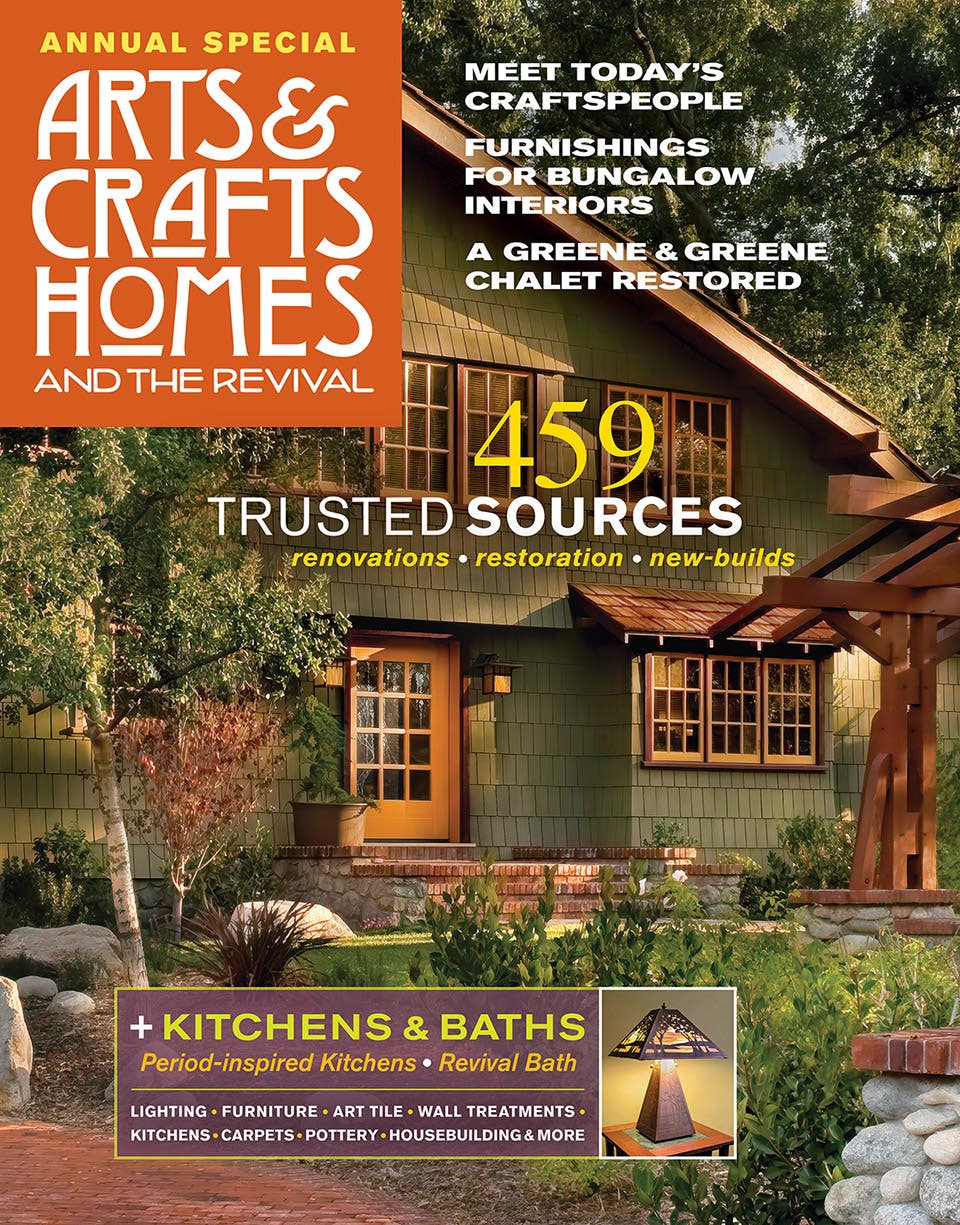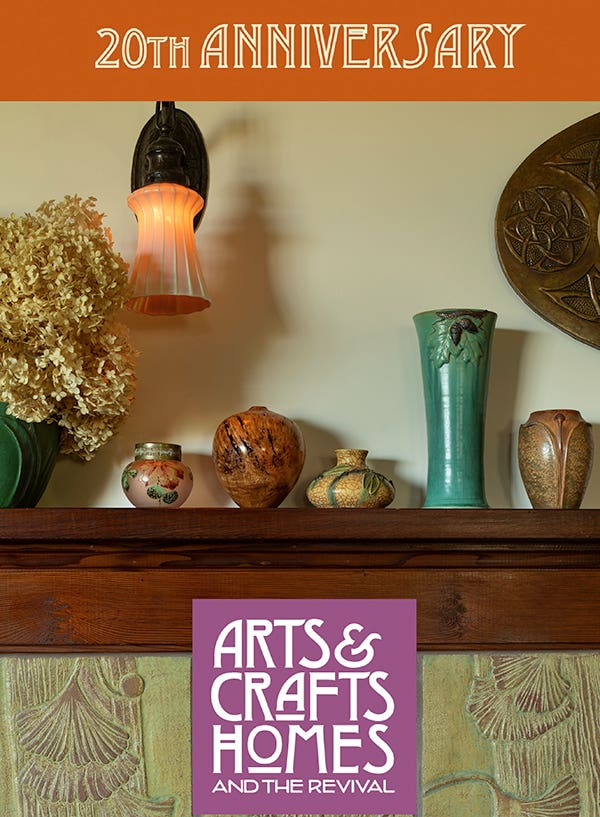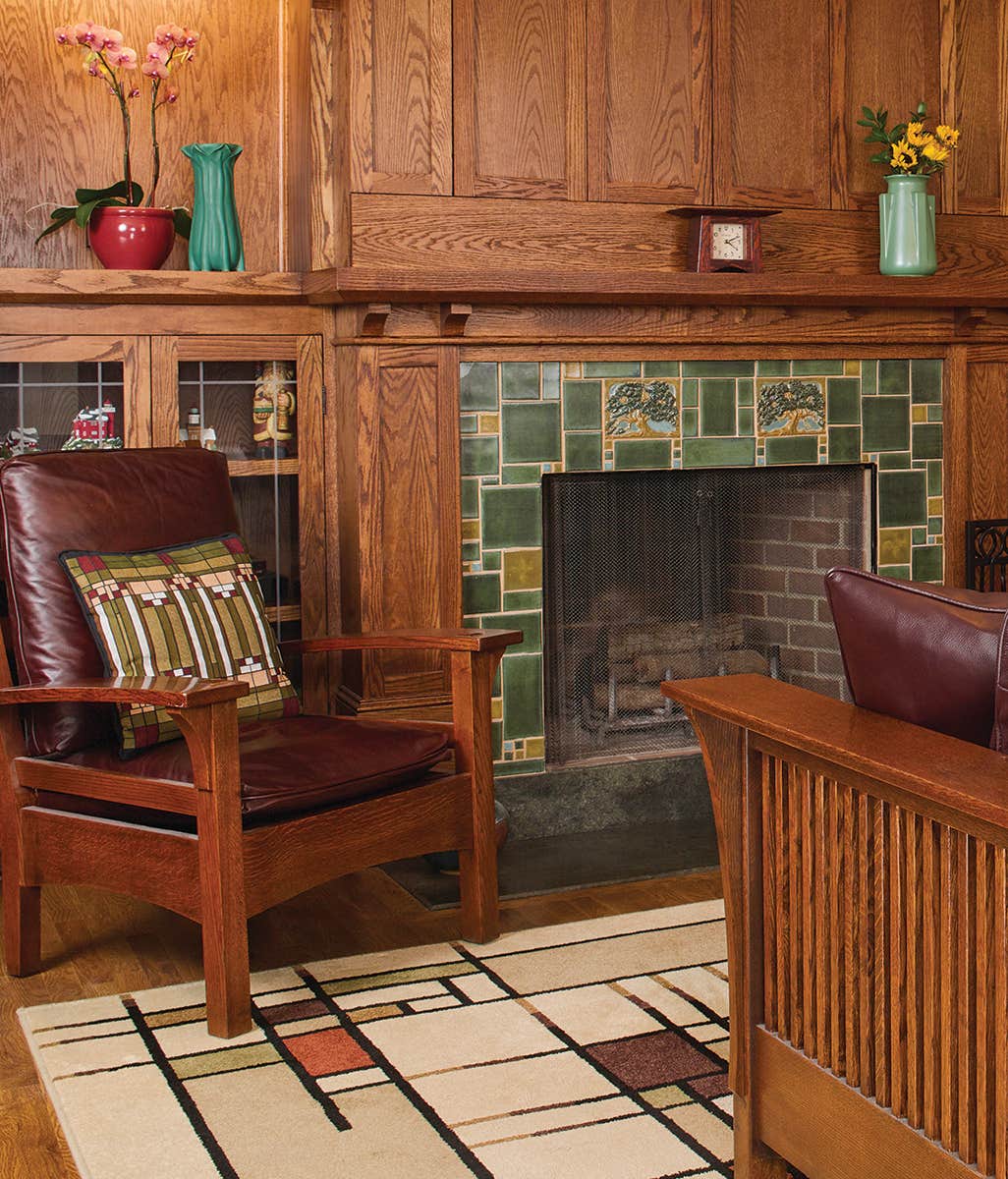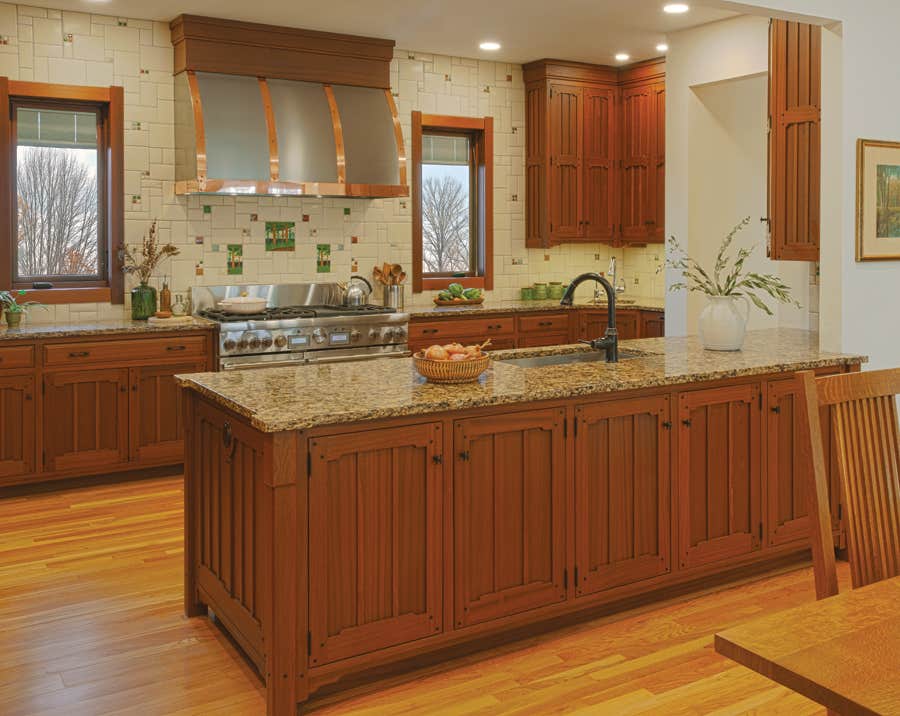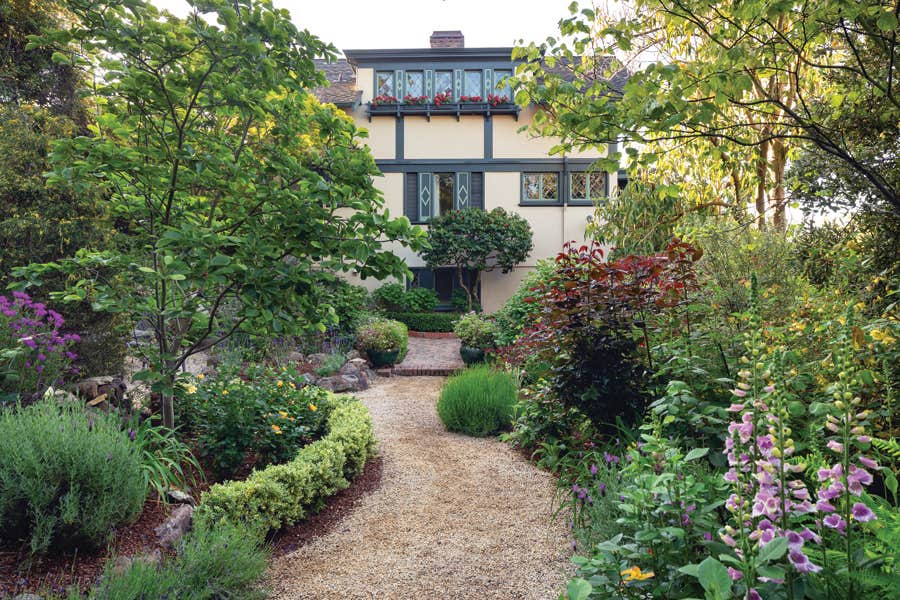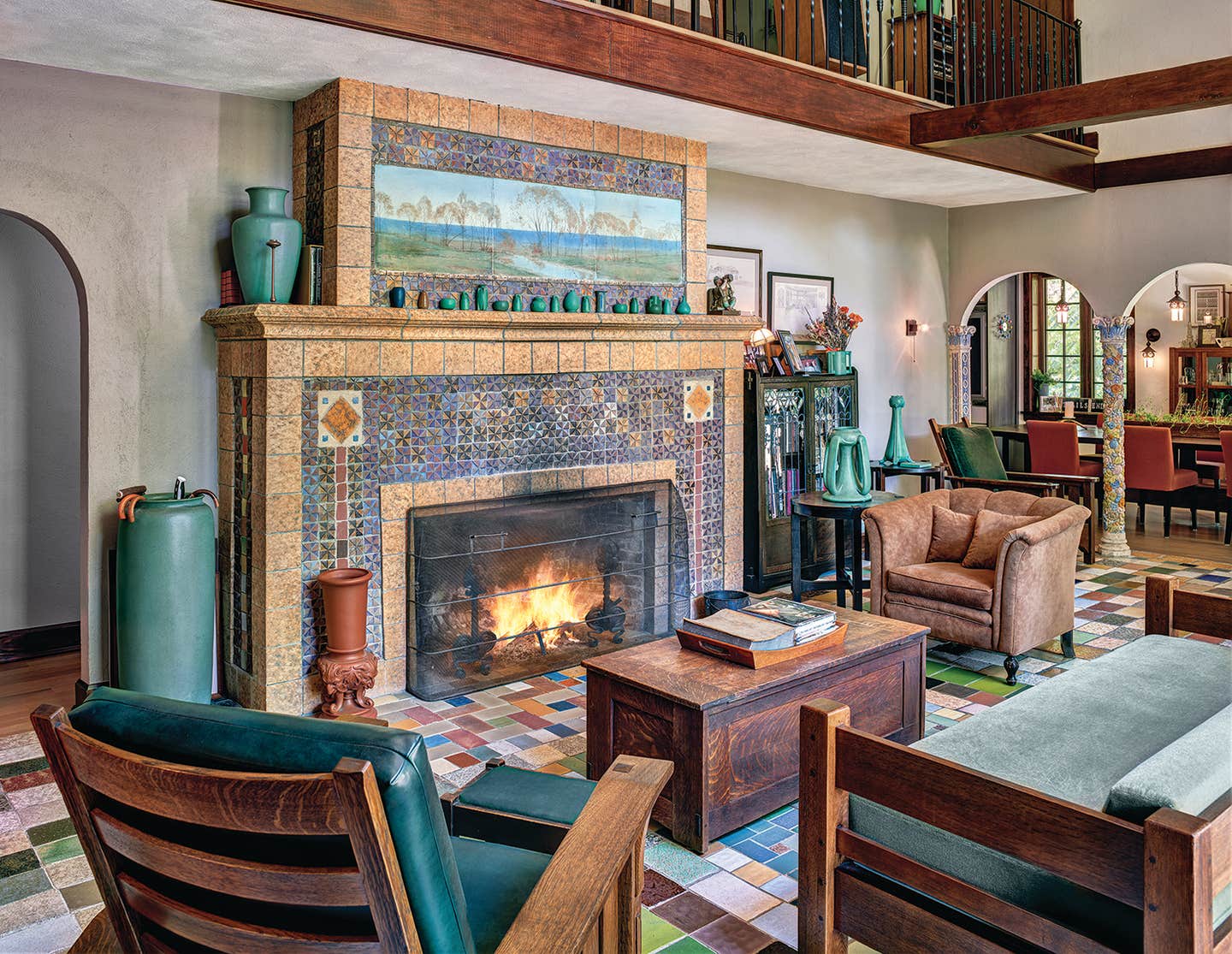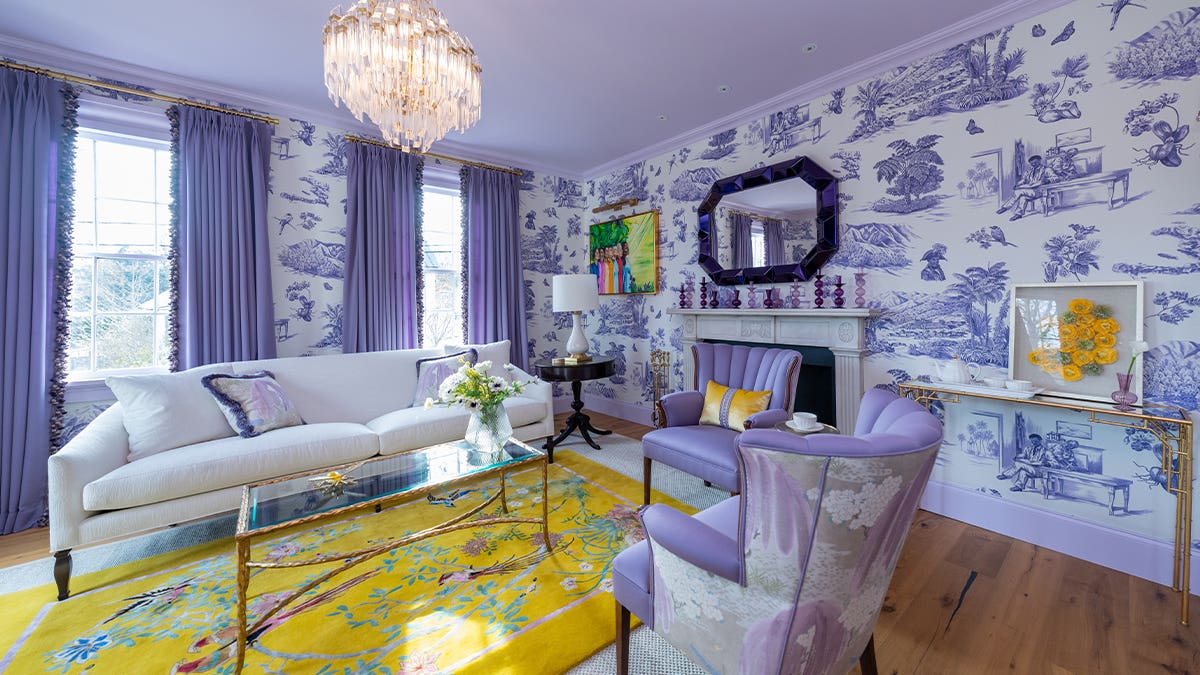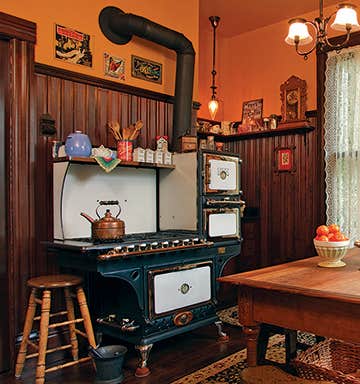A Kitchen Inspired by Greene & Greene
An admirer of Greene & Greene assembles a contemporary guild to realize her revival vision in a new kitchen.
Oprah, Madonna, Denzel . . . Charlene. In the Arts & Crafts world, too, superstars need only a first name. So it is with Charlene Albanese, a woman possessed by perfection. Her projects, be that the meticulous restoration of a bungalow or the creation of a new kitchen (by a stellar guild of revival artisans), are the stuff of legend.
Recently Charlene told me how she had assembled some of the best people to create a modern kitchen inspired by Pasadena architects Greene & Greene.
It all began in October of 2003, when Charlene and her husband, Ken Casey, purchased a pleasant, garden-variety, 1980s-era house on a cul-de-sac a few miles distant from her restored bungalow. The kitchen had all the upscale accoutrements—but it wasn’t “Charlene.” Now Charlene has been a regular attendee at the Grove Park Inn Arts & Crafts Conference held every February in Asheville, N.C., and of course she’s been a frequent visitor to Greene & Greene’s Gamble House over the past 30 years, and once was a docent at the Blacker House. She has long admired the elegant simplicity of their work, done on a grand scale. Her big 1980s kitchen was the perfect size to play out her Greene & Greene vision.
Charlene began by speaking to Roger Mollison of Marshall White Construction, along with design consultant and author Paul Duchscherer. They went over Greene & Greene books and discussed how to translate early-20th-century design into a 21st-century kitchen. During the Greenes’ time, built-in dishwashers and espresso machines and jumbo electric refrigerators were still in the future. To start, Mollison stripped the room to the studs and raised the ceiling height.
Paul Duchscherer made rough sketches, but no formal working drawings were done. Charlene and Roger Mollison preferred to work in concert with the artisans, asking their input as the project moved forward. It turned out that coordination was not difficult. Everyone wanted his or her work to shine, and that meant working together.
And so this kitchen took some time to build—about three years from initial talks to final finish. Construction took about a year and a half. Almost everything in the room is custom, from cabinet hardware and light fixtures to the unique copper range hood. Perfectionism? When the initial drawing for the hood was submitted, another artisan, a hunter, pointed out that the depiction of a mule deer in the woods was wrong: “not the right habitat.” He counseled an “open, semi-arid area.” Back to the drawing board; the finished repousse work shows the mule deer in a treeless landscape.
It’s often been said that too many cooks spoil the broth. In this case, paraphrasing Ruskin is more apt. (English reformer John Ruskin is often called the grandfather of the Arts & Crafts movement.) “When love and skill [and people] work together, expect a masterpiece.”
Sources:
Glass: Ted Ellison theodoreellison.com
Art tile: Laird Plumleigh lairdplumleigh.com
Copper hood: Archive Designs
Copper sink: Oregon Copper Bowl Co. oregoncopperbowl.com
Roman shades: Dianne Ayres/Arts & Crafts Period Textiles
Contractor: Marshall White Construction marshallwhiteconstruction.com
Arts & Crafts Homes and the Revival covers both the original movement and the ongoing revival, providing insight for restoration, kitchen renovation, updates, and new construction. Find sources for kitchen and bath, carpet, fine furniture and pottery, millwork, roofing, doors and windows, flooring, hardware and lighting. The Annual Resource Guide, with enhanced editorial chapters and beautiful photography, helps Arts & Crafts aficionados find the artisans and products to help them build, renovate, and decorate their bungalow, Craftsman, Prairie, Tudor Revival, or Arts & Crafts Revival home.

